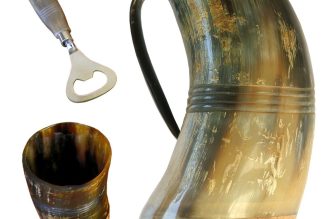Lucius Apuleius is best known to us as the author of The Golden Ass,
one of the most famous romances in the world, containing as it does the story of Cupid and Psyche. His importance to the study of witchcraft
rests on the fact that The Golden Ass is a romance of witchcraft, and
illustrates the beliefs which were held about witches in the pre-Christian
world.
This work of Apuleius proves that witchcraft was not, as some
modern writers have claimed, an invention of the Middle Ages, On the
contrary, witchcraft was known, feared and respected in Ancient
Greece and Rome.
Lucius Apuleius was a priest of Isis, who was born at Madaura, a
Roman colony in North Africa, early in the second century A.D. His
family was wealthy, and he travelled quite extensively for those times,
in search of education and insight into religious mysteries. He was once
himself accused of practising black magic. He had married a wealthy
widow, older than himself, and the widow’s jealous family brought an
accusation against him of having bewitched her into matrimony.
However, Apuleius successfully defended himself in court by a brilliant
and witty speech, which was later published under the title of A Discourse on Magic (Apulei Apologia sive pro se de Magia Liber, with introduction and commentary by H. E. Butler and A. S. Owen, Clarendon
Press, Oxford, 1914).
His book The Golden Ass has been translated into English by William
Adlington in 1 566 (Simpkin Marshall, London, 1 930 and AMS Press,
New York, 1 893), and in our own day by Robert Graves in 1 950. It
pretends to be an autobiography, telling how Lucius as an adventurous
young man found himself in Thessaly, a region in Greece notorious for
witchcraft. After hearing from his travelling companions various hairraising tales about the dark powers ofThessalian witches, he determined
to pry into witchcraft himself. His cousin, Byrrhaena, warned him that
his host’s wife, Pamphile, was a most dangerous witch ; but her words
of caution only made his curiosity keener.
He resolved to seduce Pamphile’s maid, Fotis, and thus gain entry into
the secrets of Pamphile’s witchcraft. As Fotis was quite willing to be
seduced, Lucius’ plan at first appeared to prosper. He persuaded the girl
to let him secretly watch her mistress anointing herself with a magic
unguent, which transformed her into an owl and enabled her to fly
through the night in that shape.
However, when Lucius got the girl to steal a pot of the witch’s
unguent for him, it changed him not into an owl, the bird of wisdom,
but into an ass. Fotis told him that the counter-magic which would
restore him to human shape was to eat roses; but before he was able
to do this he passed through one wild adventure after another, until
the goddess Isis took pity on him and helped him to regain his humanity.
The witches in The Golden Ass have many of the characteristics
attributed to those of the Middle Ages. They can change their shape
by means of magic unguents; they steal parts from corpses to use in their
spells; they bewitch men by obtaining pieces of their hair ; they can
cast a glamour over the senses, and charm people asleep ; they can pass
through a hole in a door by changing themselves into a small animal,
or even an insect; and they can transform others into animal shape.
However, Apuleius as a priest oflsis shows both sides of the cult of the
moon goddess, the right- and left-hand paths. He recognises Isis as the
Queen of Heaven, yet identical in her dark aspect with Hecate and
Proserpine, the Queen of the Underworld. The roses which redeem
Lucius from the shape of an ass are the symbol of the Mysteries; an
idea which in later years was repeated in the occult emblem of the Rosy
Cross.
William Adlington, the sixteenth-century translator of Apuleius,
recognised that this magical romance had an inner meaning, and that
“this booke of Lucius is a figure of man’s life”, conveyed in the form
of a picaresque novel.
ARADIA
Aradia: or the Gospel of the Witches is the title given by Charles Godfrey
Leland to the important collection of witch-lore that he published in
1899 (David Nutt, London). He tells us that as far back as 1886 he
learned from his acquaintances among the witches of Italy that there
was a manuscript in existence setting forth the doctrines of La Vecchio
Religione, the Old Religion of witchcraft. He urged his friend, Maddalena, to obtain it for him. (See LELAND, CHARLES GODFREY.)
Eventually, at the beginning of 1897, he received a manuscript from
her ; and this formed the basis of his book Aradia, which was published
in London by David Nutt. It is one of the most important pieces of
evidence for the survival of the Old Religion into modern times, and
also for the fact that the beliefs of the witches do constitute a religion,
however fragmented by the passing centuries.
It is the more convincing in that it is, as it stands, obviously muddled
and incomplete. In fact, in my own opinion, the text of Aradia has been
deliberately ‘pied’, because the witches, although they regarded Leland
as one of themselves, indeed as a veritable stregone, or powerful wizard,
did not really want their secrets published in plain terms. In order to
sort out the text of Aradia, one needs to be a witch oneself, and also to
be able to compare Leland’s English translation with the Italian original.
It so happens that this writer possesses both these qualifications.
Aradia seems, curiously enough, to have been bypassed by most
writers on witchcraft. At the time when Leland published it, most of its
contents would undoubtedly have been considered ‘not quite nice’. Its
sexual frankness-which Leland has toned down in his translation-its
attacks on the Christian Church, its anarchistic attitude towards the
social order, all contributed to make it a book

